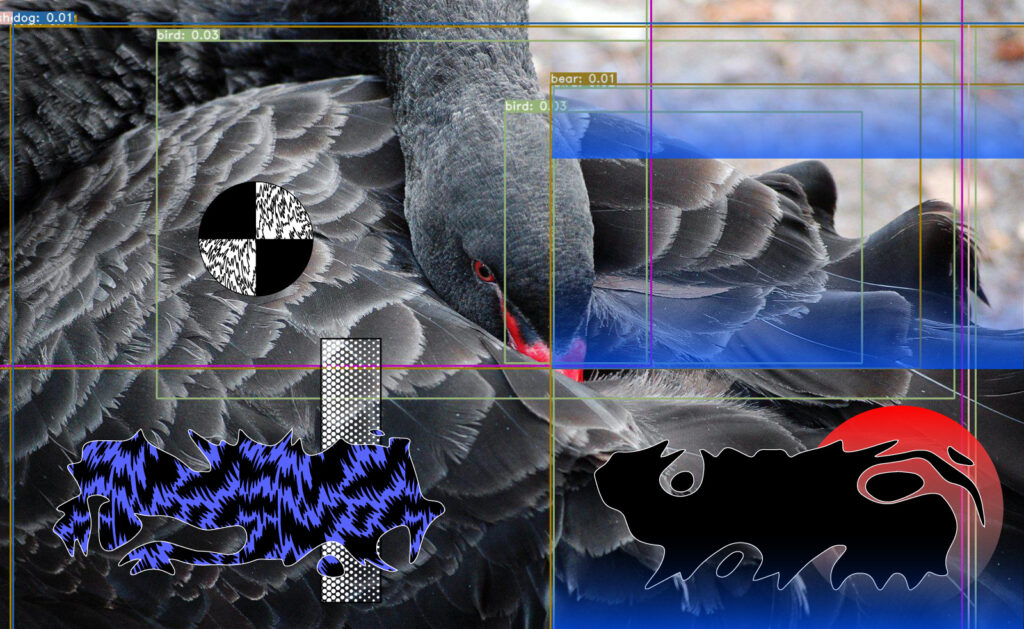
On 5 March at 19.00 the last part of the public art exhibitions series titled “Nocturnal visions” opens with “Black swan pattern” by Norman Orro, presented on the wall of the Explorer building at Kai 1, Tallinn.
The work is best viewed from a distance, so we suggest everyone arrive from the Mere puiestee side, keeping a safe distance. Norman Orro’s work is on view every day between 18.00–22.00 (on weekends until 23.00) from 5 March to 1 April.
The video work “Black swan pattern” offers a glimpse into the world of computer vision, focusing on the natural world more specifically. The work looks at how computers relate to nature and brings together researchers’ and the artist’s own experiments with the newest object recognition technologies.
“Black swan” refers to rare and unexpected events. The term originates from 2nd century Rome, where the poet Juvenal wrote about something that is “as rare as a black swan”, assuming black swans do not exist in the world. In the field of computer vision unexpected black swans are a common problem. For object recognition software trained in an urban environment organic forms are unexpected and it might, for example, identify a moose as a motorcycle.
The black swan problem is not only a technological but mainly a socio-cultural phenomenon, characteristic to all fields of contemporary society – the more complicated the system, the more unexpected outcomes it produces.
Norman Orro (1986) is an artist, musician and graphic designer, whose work is influenced on the one hand, by the internet and globalisation and on the other, nature and the climate crisis. In 2015, he contributed to the Chinese pavilion exhibition at the Venice Biennale with his music project Music For Your Plants. Since 2014 he has been teaching at the graphic design department at the Estonian Academy of Arts.
“Nocturnal visions” is a series of exhibitions in city space initiated by Estonian Centre for Contemporary Art, bringing contemporary art to the LED-screens of the Explorer building. In January, Kristi Kongi exhibited her piece “Pink Cloud” and in February Flo Kasearu showed her work “Excuses”.
The Explorer office building is located in Tallinn, near Mere puiestee. The building’s facade is constructed, using a solution unique in Estonia: all of its walls are covered in LED panels, allowing to display a 360-degree static and dynamic image. Essentially, the whole facade of the building can be used as a large screen.
Owned by the real estate developer Estmak Capital, the commercial building Explorer was officially recognised as the most environmentally friendly commercial building in Estonia. It obtained an energy-efficient building certification LEED Platinum (Leadership in Energy and Environmental Design, USGBC, USA) that makes the building the greenest of its kind. Estmak Capital supports contemporary Estonian art and wishes to contribute to making the city more colourful and creative.
The CCA is the oldest centre of art expertise in Estonia, creating possibilities for Estonian artists and within the Estonian art field since 1992. The CCA is also the commissioner of the Estonian pavilion at the Venice Biennale. The CCA actively participates in the Estonian art scene by curating and organising exhibitions and other art events, and publishes an online magazine.
The title of the exhibition series, “Night visions” is a reference to a poetry collection by the Estonian poet Doris Kareva “Ööpildid”, published in 1980.